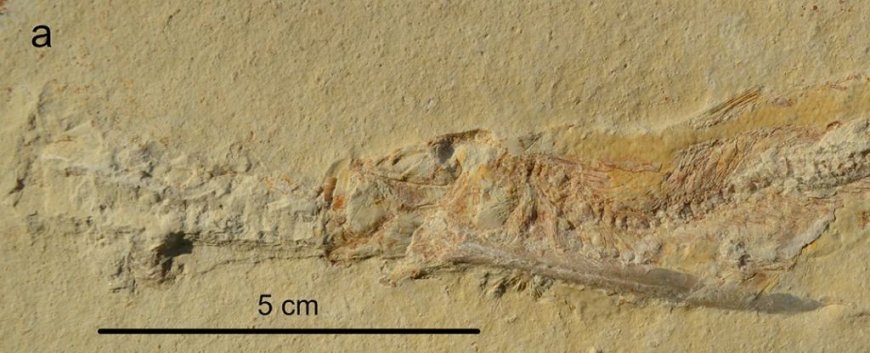Jurassic Fish Choked to Death by Squid-Like Creatures, Fossils Reveal
Fossil analysis shows that Jurassic Tharsis fish often died from swallowing belemnites. These ancient fish were micro-carnivores that sucked in small prey. Researchers believe the fish accidentally ingested the belemnites while feeding on floating objects, leading to fatal choking. The study sheds light on a bizarre prehistoric phenomenon.

An extinct genus of ray-finned fish that lived during the Jurassic period seems to have had quite the penchant for overreaching.
A new analysis of fossilized Tharsis fish reveals that the carnivorous marine animals seem to have frequently met their end with large cephalopods known as belemnites lodged quite fatally in their gullets.
According to paleontologists Martin Ebert and Martina Kölbl-Ebert of Ludwig Maximilian University of Munich in Germany, Tharsis fish found in the 152 million-year-old Solnhofen Plattenkalk (limestone) formation in Germany appear in multiple instances to have died while attempting to swallow a belemnite nearly as long as themselves.
\"A recent review of collection material … uncovered several specimens of Tharsis from the Late Jurassic Plattenkalk deposits of the Solnhofen Archipelago with belemnites wedged in mouth and gill apparatus,\" they write in their paper.
\"In all cases, the rostrum beak reexits through the gill apparatus, whereas the broad phragmocone internal shell of the belemnite is firmly lodged in the mouth opening.\"
Tharsis fish were what are known as micro-carnivores; animals that eat very small animals such as larvae and zooplankton, in this case by using suction to gulp down their food. Their fossils are quite common.
Belemnites, which resembled squid with a long hooded body and multiple arms, lived in the open ocean, left far fewer fossils.
Interestingly, the belemnite fossils found in the Plattenkalk basins of Eichstätt and Solnhofen often consist of an internal shell overgrown with bivalves – suggesting that the belemnite was dead, kept buoyant in the water column by a gas-filled shell colonized by other animals, such as clam-like molluscs, feasting on the decaying soft tissue.
Tharsis fish were unlikely to be looking for food amid the hostile conditions of the seafloor, nor would the fish have been preying directly on the belemnites – but the researchers believe they know why the dead, drifting cephalopods may have posed such a choking hazard for the hapless fish.
\"Apparently, these micro-carnivore fish were in the habit of sucking remnants of decaying soft tissue or overgrowth such as algae or bacterial growth from floating objects, but when a streamlined floating belemnite rostrum accidentally was sucked into the mouth, they were no longer able to get rid of these deadly objects,\" the paleontologists write in their paper.
\"Even though the fish tried to pass the obstructive item through its gills, there was no way of getting rid of it, leading to death by suffocation.\"
Sounds deeply unpleasant, really.
The research has been published in Scientific Reports.
What's Your Reaction?
 Like
0
Like
0
 Dislike
0
Dislike
0
 Love
0
Love
0
 Funny
0
Funny
0
 Angry
0
Angry
0
 Sad
0
Sad
0
 Wow
0
Wow
0


















































































































































































